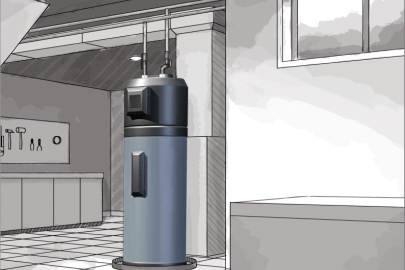Useful Techniques for Caring for Your Home's Hot Water SystemSteps to Successfully Care for Your Home's Hot Water System
Useful Techniques for Caring for Your Home's Hot Water SystemSteps to Successfully Care for Your Home's Hot Water System
Blog Article
Just how do you feel when it comes to How to Maintain Your Water Heater & Prolong its Life?

Warm water is crucial for daily comfort, whether it's for a refreshing shower or cleaning recipes. To guarantee your hot water system runs efficiently and lasts longer, normal upkeep is crucial. This article gives practical tips and insights on how to keep your home's warm water system to avoid disturbances and pricey fixings.
Intro
Keeping your home's warm water system may seem overwhelming, but with a few simple actions, you can guarantee it operates efficiently for many years to find. This guide covers whatever from understanding your hot water system to DIY upkeep pointers and understanding when to hire professional assistance.
Significance of Preserving Your Hot Water System
Normal maintenance not just extends the life-span of your warm water system however also guarantees it runs effectively. Overlooking upkeep can bring about reduced efficiency, greater power expenses, and even early failure of the system.
Signs Your Hot Water System Needs Upkeep
Understanding when your hot water system requires interest can prevent significant problems. Look out for indications such as inconsistent water temperature level, strange sounds from the heater, or rustic water.
Recognizing Your Hot Water System
Prior to diving into upkeep tasks, it's valuable to understand the fundamental elements of your warm water system. Usually, this consists of the water heater itself, pipes, anode poles, and temperature controls.
Month-to-month Maintenance Tasks
Normal regular monthly checks can aid catch small issues before they rise.
Flushing the Hot Water Heater
Flushing your hot water heater eliminates debris accumulation, boosting effectiveness and prolonging its life.
Monitoring and Changing Anode Rods
Anode rods protect against rust inside the container. Examining and changing them when worn is critical.
Examining and Readjusting Temperature Setups
Adjusting the temperature setups guarantees optimum performance and security.
Do It Yourself Tips for Maintenance
You can do several maintenance jobs yourself to keep your warm water system in leading condition.
Checking for Leakages
Routinely check pipelines and connections for leakages, as these can bring about water damage and higher bills.
Evaluating Pressure Relief Valves
Checking the stress safety valve guarantees it operates appropriately and prevents excessive pressure accumulation.
Protecting Pipelines
Shielding warm water pipelines lowers warm loss and can conserve power.
When to Call a Professional
While DIY maintenance is valuable, some issues require expert experience.
Facility Concerns Calling For Specialist Aid
Examples include major leaks, electrical problems, or if your water heater is consistently underperforming.
Routine Professional Upkeep Conveniences
Expert upkeep can include extensive assessments, tune-ups, and ensuring conformity with safety and security criteria.
Final thought
Normal upkeep of your home's warm water system is necessary for effectiveness, long life, and price savings. By following these tips and knowing when to look for specialist aid, you can make certain a reliable supply of hot water without unexpected disruptions.
How to Maintain an Instant Hot Water Heater
Before tinkering with your hot water heater, make sure that it’s not powered on. You also have to turn off the main circuit breaker and shut off the main gas line to prevent accidents. Also turn off the water valves connected to your unit to prevent water from flowing into and out of the appliance. 2. When you’re done, you have to detach the purge valves’ caps. These look like the letter “T” and are situated on either side of the water valves. Doing so will release any pressure that has accumulated inside the valves while at the same time avoid hot water from shooting out and burning your skin. 3. When the purge valves’ caps are removed, you have to connect your hosing lines to the valves. Your unit should have come with three hoses but if it didn’t, you can purchase these things from any hardware or home repair shops. You can also get them from retail stores that sell water heating systems. Read the user’s manual and follow it to complete this task properly. When the hosing lines are connected, open the purge port’s valves. 4. You should never use harsh chemical cleaners or solutions when cleaning your unit. Make use of white vinegar instead. It should be undiluted and you’ll probably use about 2 gallons. 5. Now flush your water heater. This task should probably take about 40 minutes. We can’t give you specific directions for this because the procedure is carried out depending on the type, model and brand of your heater. With that being said, refer to the user’s manual. 6. When you’re done draining the unit, you have to turn off the purge port valves again. Remove the hosing lines that you earlier installed on each of the water valves. Put the valve caps (purge port) back in their respective places and be very careful so as not to damage the rubber discs that are found inside these caps. 7. Now that everything’s back in place, check your user’s manual again to find out how to reactivate your water heating system. 8. Once it is working, turn one of your hot water faucets on just to let air pass through the heater’s water supply pipes. Leave the tap on until water flows smoothly out of it. https://www.orrplumbing.com/blog/2014/september/how-to-maintain-an-instant-hot-water-heater/

I was shown that write-up on Tips on Maintaining a Water Heater from an associate on our other domain. Liked our blog posting? Please quickly share it. Help others discover it. Thanks a bunch for your time. Kindly visit our site back soon.
Click Here Report this page